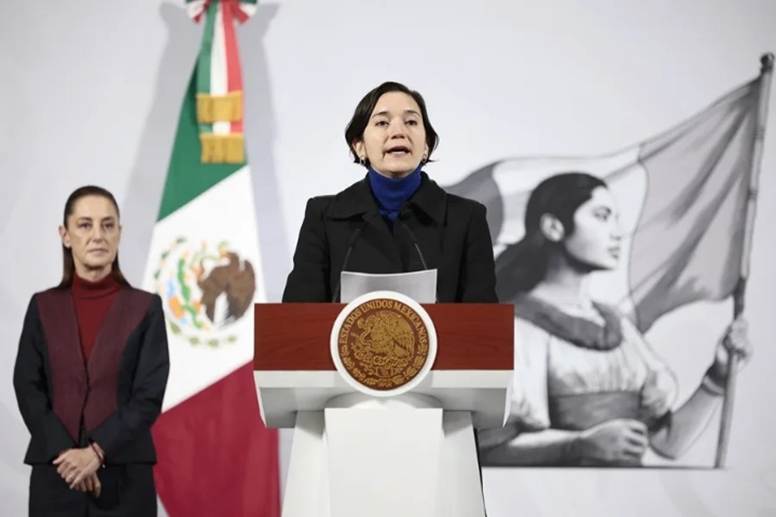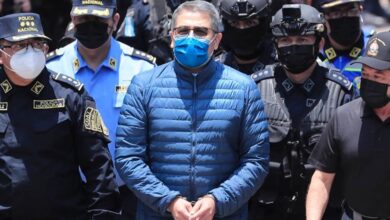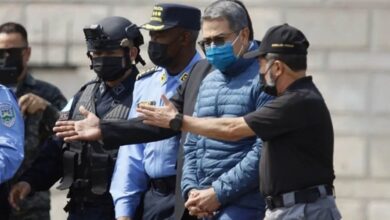Mexico’s Pacification Myth: Falling Homicides Hide Rising Disappearances and Shifting Violence

Mexico’s government celebrates a 37% drop in homicides, 37,000 arrests, and record drug seizures as proof that the country is calming down. But preliminary data, regional hot spots, and narrow definitions suggest a different truth: the violence hasn’t stopped; it’s just been renamed.
Numbers Tell a Softer Story Than the Streets Do
Start with the number that dominates the podium. The government’s charts show intentional homicides down by 37% in the first thirteen months of President Claudia Sheinbaum’s administration. On paper, that looks like relief after decades of relentless bloodshed.
Mexico entered this presidency with a grim baseline: more than 196,000 murders during the previous six years and 30,057 in 2024 alone, according to official statistics. If that curve had finally broken, it would be historic. But the government’s narrative leans on an unreliable compass.
Officials focus on daily averages, a method that smooths chaos into comfort. They point out that in October, Mexico averaged 54.5 killings per day, compared with 86.9 the month before Sheinbaum took office. That’s 32 fewer deaths daily, proudly cited by the head of the National Public Security Secretariat (SESNSP), Marcela Figueroa.
The math is straightforward; the conclusion isn’t. Comparing one month under a new president to the final month under the last one says little about a structural shift. It may capture a lull after a spike, a short-lived cartel truce, or the aftershock of a major operation. It doesn’t prove lasting peace.
And even if homicide truly dipped, that one measure cannot carry a nation’s security story. Violence mutates; it doesn’t always bleed where we count. Extortion, kidnapping, forced displacement, and attempted murders don’t show up in the homicide column. When leaders use a single metric as a mirror of national calm, they see only part of the picture reflected.
Daily Averages, Preliminary Tallies, and the Problem of Proof
Mexico’s most celebrated numbers come with footnotes. The homicide figures used in government briefings are preliminary, built from real-time police reports that are constantly revised. Prosecutors reclassify cases, coroners confirm causes of death, and entire incidents can migrate from one category to another.
Those corrections matter because the SESNSP daily updates are tactical tools, not final ledgers. Treating them as gospel is like calling halftime the end of the game.
The focus on averages creates its own mirage. By flattening peaks and valleys, daily numbers can hide regional catastrophes or make random calm look like progress. A single massacre can raise the average for a week; a week of silence can pull it down again. In that sense, averages are emotional comfort food —easy to swallow and low in nutrition.
Then comes the political temptation. When an administration builds its legitimacy around a single number, the incentive to protect that number grows strong. Questions about missing data, reclassified crimes, or divergent state-level trends become unwelcome. The danger is not manipulation so much as omission, the quiet editing of facts that don’t fit the frame.
“A good security strategy invites scrutiny,” one independent researcher told EFE. “It explains what the data mean, how they’re corrected, and what they miss. A bad one congratulates itself before the audit.“

The Concentration of Killings and the Geography of Denial
If Mexico were truly pacifying, violence would ease everywhere. It hasn’t. According to SESNSP, just seven of the 32 states, Guanajuato, Chihuahua, Baja California, Sinaloa, the State of Mexico, Guerrero, and Michoacán, accounted for more than half of all homicides in the first ten months of the year.
That concentration tells a different story. While national averages imply relief, local governments in those hot zones are still governing under siege. A mayor in Michoacán negotiates with cartels over road control; a teacher in Guerrero still walks her students past bullet casings; a market vendor in Guanajuato pays two “taxes”, one to the state, one to the local crime boss.
When half the deaths occur in a handful of places, national optimism can sound like mockery. “The average means nothing if you live in one of those seven states,” said a municipal official in Sinaloa who requested anonymity. “We don’t see pacification. We see exhaustion.“
The truth is also statistical: in areas with chronic cartel competition, murder rates swing wildly but rarely decline for long. A lull may follow a victory, but as new factions rise or alliances shift, the killing resumes. Mexico’s central narrative skips over this geography, masking pockets of chaos behind the illusion of a unified decline.
The government’s 2024 baseline also complicates the story. After record highs, some drop was inevitable, a regression to the mean rather than a transformation. The test of “pacification” isn’t whether the curve bent once, but whether it keeps bending down for years, across datasets and states, without breaking faith with transparency.
Seizures, Arrests, and the Mirage of Motion
The administration’s second drumbeat is operational: 37,000 arrests, 18,981 firearms seized, 300 tons of drugs confiscated, including over four million fentanyl pills. Soldiers and marines, officials say, dismantled 1,614 meth labs, a blow “worth hundreds of millions of pesos.”
On their own, these are feats of coordination and courage. But arrests and seizures are inputs, not outcomes. They measure activity, not impact. Without convictions, those arrests can dissolve in court. Without follow-up intelligence, labs reappear under new roofs. Without systemic reform, the same cartels replace their fallen soldiers within weeks.
“Every seizure looks like progress until the next truck rolls through,” said a former federal prosecutor in Baja California, speaking to EFE. “What we need to see is less product on the street, fewer extortion calls, safer communities, not bigger piles of evidence in a press release.“
The government argues that its results stem from a refined strategy: intelligence-led policing, the consolidation of the National Guard, and a new National Intelligence and Investigation System to coordinate arrests. The blueprint is sound; the proof, incomplete.
A real indicator of success would include rising conviction rates, reduced backlog in state prosecutors’ offices, and visible improvements in forensic capacity. Those numbers are rarely announced. Instead, the public is left with photo ops, rows of guns, pallets of drugs, and the word “pacification” repeated like a protective charm.
Beyond the Fiction: What Real Peace Would Look Like
For ordinary Mexicans, peace is not a percentage. It’s the sound of markets reopening after dusk, of buses running unescorted through once-forbidden highways. It’s seeing neighbors return from work without fear, and police solving crimes instead of surviving them.
Mexico’s 18,000 homicides in nine months, even if fewer than last year, still mean 18,000 funerals, 18,000 families who will never applaud a chart.
If the country truly wants to measure progress, it should track what citizens feel and what prosecutors achieve, not just what briefings celebrate. SESNSP’s daily numbers are a start; INEGI’s death certificates, the National Registry of Missing Persons, and independent watchdogs like México Evalúa are the mirror. Together, they can tell an honest story, one of improvement where it exists and danger where it persists.
Until those stories align, Mexico’s “pacification” will remain less a fact than a phrase, a carefully drawn line on a chart that smooths out the noise of a conflict still rumbling in the hills, the markets, and the morgues. The country deserves more than mathematical hope. It deserves evidence that peace can survive contact with reality.
Also Read: Eighty and Entrenched: Daniel Ortega’s Bunker Birthday and the Nicaraguan Autocracy Time Built




